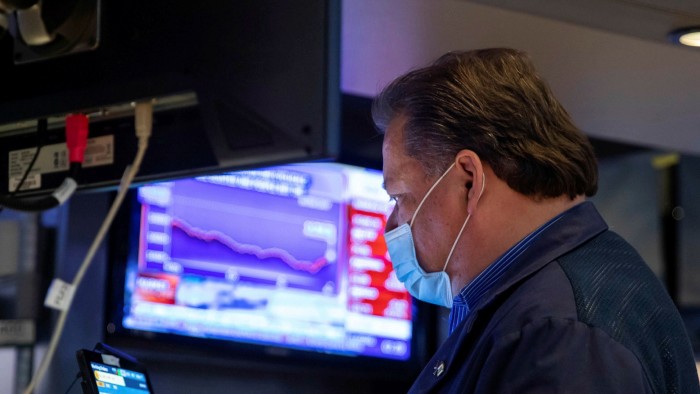Bond markets: inflation tremors chip away at yields

Roula Khalaf, Editor of the FT, selects her favourite stories in this weekly newsletter.
Central bankers, spooked by inflationary tremors percolating through markets, are sharpening their tools. Three — in Brazil, South Korea and Norway — have all raised rates. The US Federal Reserve and Bank of England this week signalled similar actions was on the cards.
The subsequent sell-off in government bonds was overblown. The duo’s comments were neither particularly surprising nor especially blatant. Actual action remains some way off: next year for the BoE and Fed, and a couple of years after that for the European Central Bank. Still, it is clear that the world is lurching towards a tightening cycle. Investors, having been caught short in the summer rally by banking on the only way being up, will not want to make the same mistake again of assuming higher short-term interest rates and steeper yield curves go hand in hand.
There are two points of focus. One, inflation is not as transitory as some hoped and central banks have no intention of sitting idle. This gives rise to a secondary concern: the risk of policy error and how that plays out on the yield curve.
Assume central banks err on the heavy-handed side, raising rates at too rapid a clip and choking off already fragile economic growth. All else being equal, that implies a drop in longer-dated yields. Indeed, yield curves — for example, with gilts — are already flattening. Some strategists reckon that can go further, positing the possibility of a yield curve inversion as short term rates rise beyond 10-year gilts, currently at 0.9 per cent.
Policy errors have delivered crushing blows in the past; recall inflation hawk Jean-Claude Trichet, as the man at the top of the ECB, raising rates as the continent lurched into financial crisis. Accelerated increases could see a repeat, although presumably not this time in Europe, where growth is more precarious than the US.
One factor tempering pessimism is, ironically, the debt burden amassed during the pandemic. Higher interest rates mean higher debt servicing costs, something bankers will be wary of. It is also harder to discern the impact on yields when quantitative easing, which makes central banks buyers, distorts the picture. But one thing is clear. Bond markets will be getting bumpier.
The Lex team is interested in hearing more from readers. Please tell us what you think of the outlook for government bonds in the comments section below.
Comments